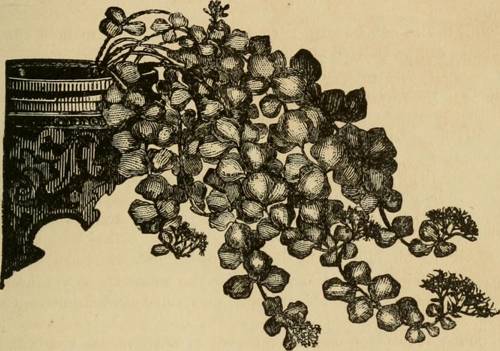
FAQ About Care Strategies for Indoor Climbing Vines

What are the best indoor climbing vine varieties for beginners?
Some of the best indoor climbing vines for beginners include Philodendron, Epipremnum aureum (also known as Devil's Ivy or Pothos), and the Hedera helix or English Ivy. These plants are known for being relatively low maintenance, adaptable to different light conditions, and forgiving if you occasionally forget to water them. They grow quickly and can add lush greenery to your indoor space.

How should I support my indoor climbing vines?
Supporting indoor climbing vines can be done using a variety of structures like moss poles, trellises, or even strings attached to the wall. Choose support structures based on the strength and weight of the vine. For softer vines, lightweight supports like mesh or netting may suffice, while sturdier vines may require heavier duty supports like wooden trellises.

How often should I water my indoor climbing vines?
The watering needs of indoor climbing vines depend on the specific type, but as a general rule, they prefer their soil to dry out slightly between waterings. Check the top inch of the soil; if it feels dry, it’s time to water. Be cautious not to overwater, as this can lead to root rot.

What type of light do indoor climbing vines need?
Indoor climbing vines usually thrive in bright, indirect light. However, some varieties like Pothos can tolerate low light conditions. It is important not to expose most vines to direct sunlight as it can scorch their leaves. Evaluate your specific plant's needs and adjust its placement accordingly.

How can I encourage my indoor climbing vines to grow faster?
To encourage faster growth, ensure your indoor climbing vines have the right balance of light, water, and nutrients. You can use a balanced houseplant fertilizer during the growing season. Additionally, periodic pruning can spur growth by encouraging the plant to develop new shoots.

How do I prune indoor climbing vines?
Pruning indoor climbing vines involves cutting back long, unruly stems to promote bushier growth. Use clean, sharp scissors or pruning shears to cut just above a leaf node (where the leaf joins the stem) or a bud. Regular pruning can help maintain the plant's shape and size.

Can indoor climbing vines improve air quality?
Yes, indoor climbing vines like Pothos and English Ivy are known for their ability to purify the air by removing toxins like formaldehyde and benzene. This makes them a great addition to indoor spaces for both aesthetic and health benefits.

Do indoor climbing vines need fertilizer?
Though not absolutely essential, fertilizing indoor climbing vines during the growing season (spring and summer) can support healthier and more vigorous growth. Use a balanced, water-soluble fertilizer every 4-6 weeks, diluted to half-strength to avoid overfeeding your plant.

How do I prevent pests on my indoor climbing vines?
To prevent pests on your indoor climbing vines, maintain good plant hygiene by removing dead leaves and debris. Inspect your plants regularly for signs of pest infestations, such as holes or spotting on leaves. If pests are present, treat them early with insecticidal soap or neem oil, and ensure that the plant is not stressed from over-watering or inadequate light.

Can I grow indoor climbing vines without soil?
Yes, certain types of indoor climbing vines can be grown using hydroponic systems or in water alone. Pothos, for instance, can root and grow in water indefinitely. Hydroponic growth allows for easy monitoring of nutrient levels; however, it still requires regular maintenance to ensure healthy growth.

What temperature is ideal for indoor climbing vines?
Most indoor climbing vines thrive in temperatures between 60°F (15°C) and 75°F (24°C). It's important to avoid letting temperatures drop below 50°F (10°C) as this can stress or even damage the plant. Additionally, keep them away from cold drafts or heat sources that can cause temperature fluctuations.

How do I train indoor climbing vines to grow in a specific direction?
Training indoor climbing vines requires gently guiding and securing the vines onto support structures using plant ties or soft strings. Start by determining the direction you want your vine to grow and then regularly adjust to secure the stems along the desired path as they grow.

Are indoor climbing vines toxic to pets?
Some indoor climbing vines, like Pothos and Philodendron, are toxic to pets if ingested. They can cause symptoms like vomiting and irritation in cats and dogs. If you have pets, choose non-toxic alternatives like the Baby Tears plant or ensure your climbing vines are out of reach of curious pets.

How can I propagate indoor climbing vines?
Indoor climbing vines can typically be propagated through stem cuttings. Cut a segment of the vine that includes at least two nodes, place it in water until roots develop, and then transplant it into soil. This method is effective for most popular vines like Pothos and Philodendrons.

What are common diseases affecting indoor climbing vines?
Common diseases that affect indoor climbing vines include root rot, often caused by overwatering, and various fungal infections like powdery mildew. Ensure proper watering routines and good air circulation to minimize these risks. If signs of disease appear, such as discoloration or withering leaves, treat with appropriate fungicides.

How can I make my indoor climbing vine leaves look more vibrant?
To enhance the vibrancy of your vine’s leaves, ensure they receive adequate indirect light, and maintain a regular watering and fertilizing schedule. Occasionally, clean leaves with a damp cloth to remove dust, which helps the plant breathe better and appear more vibrant.

Can I use indoor climbing vines as living curtains or room dividers?
Yes, indoor climbing vines can be used creatively as living curtains or room dividers. By training vines along ceiling rods or across room dividers, they can provide a lush, green appearance and naturally separate spaces within your home.

How do I deal with yellowing leaves on my indoor climbing vines?
Yellowing leaves on indoor climbing vines can indicate a variety of issues, including overwatering, inadequate light, or nutrient deficiencies. Assess your plant’s environment to ensure it's getting the correct amount of water and light, and consider adjusting your fertilization routine. Remove yellow leaves to allow the plant to focus on new growth.

Are indoor climbing vines suitable for all parts of a house?
Indoor climbing vines can thrive in different parts of a house, provided they meet their specific light and humidity requirements. For example, they can be placed in bathrooms where humidity is high or living rooms with bright, indirect light. Avoid placing them in areas with extreme temperature changes or in direct sunlight.

How much humidity do indoor climbing vines need?
Most indoor climbing vines prefer moderate to high humidity levels ranging from 40% to 60%. This can be naturally found in areas like bathrooms or with the help of humidifiers. Misting the leaves occasionally can also help maintain humidity, especially in drier indoor environments.
